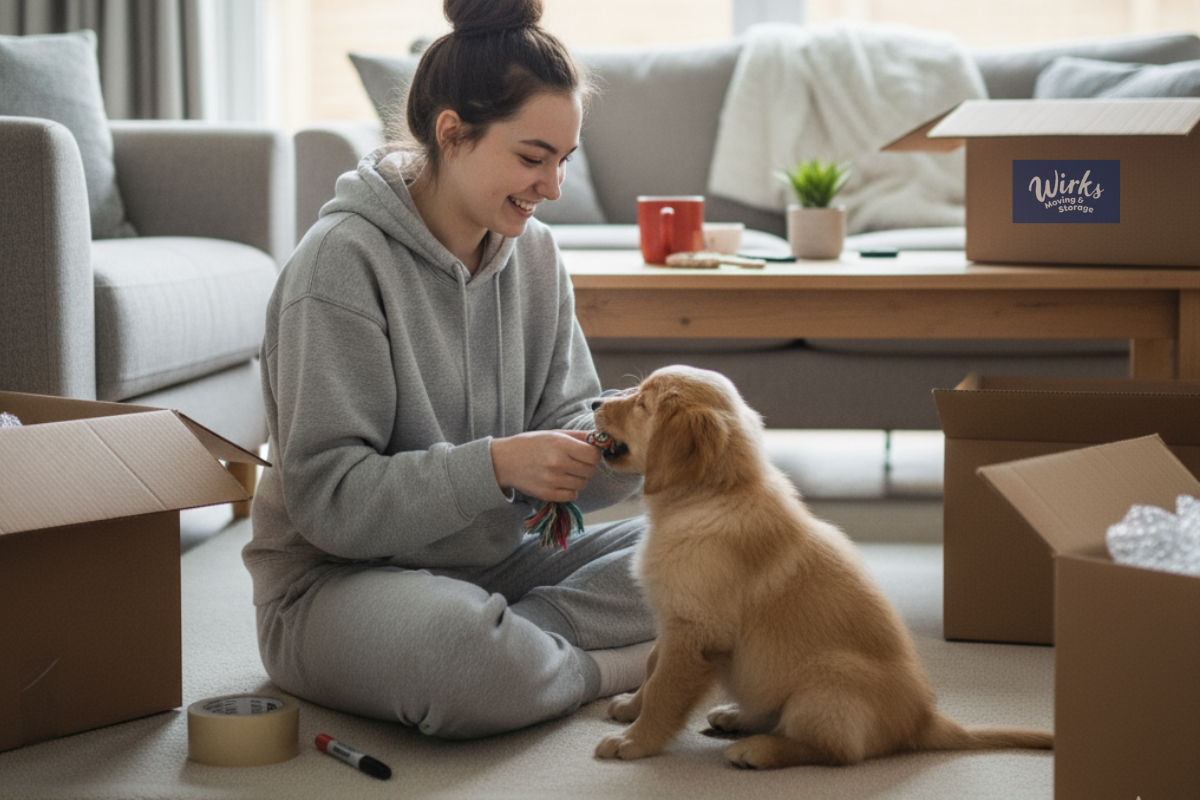Planning to move long-distance with pets requires careful preparation and attention to their needs. Pets can feel stressed during big changes, so proper planning helps them stay calm and safe. This guide covers everything you need to know about relocating with your furry friends. Moving experts recommend starting preparations weeks before your move date. We'll guide you through creating checklists, selecting transportation options, and helping your pets adjust to their new home.
Pet-Friendly Moving Checklist
Creating a solid checklist helps you move long distances with pets without missing key steps. Schedule a veterinary appointment to confirm that your pet's vaccinations are current and obtain copies of their medical records. Update your pet's ID tags with your new address and phone number right away. Pack a separate bag with their food, water bowls, medications, favorite toys, and bedding. Get a sturdy carrier that gives your pet enough room to stand and turn around comfortably. Research pet-friendly hotels or rest stops along your route for breaks during the trip.
Preparing Your Pets for Travel
Preparing your pets for the journey requires time and patience. Let them spend time in their carrier or crate for several weeks before moving day. Place their favorite blanket or toy inside to create a sense of security and comfort. Confirm all vaccinations are complete and consider getting a microchip for added security. Take your pets on short car rides to help them get used to being in a vehicle. Keep their meal times and walks on the same schedule to reduce anxiety.
Choosing the Right Transport Method
The right transport method depends on your pet's size, personality, and health needs. Small cats and dogs often do well in carriers placed on the back seat of your car. Bigger pets might need a ventilated crate in the cargo area or a professional pet transport service. Some pets handle long drives better than others, so think about your animal's comfort level. Make sure the method you choose provides them with proper airflow and protection throughout the trip.
Ensuring Pet Safety During the Journey
Keeping your pets safe during travel requires planning and attention. Here are three ways to protect them on the road:
- Regular Breaks: Stop every 2-3 hours to allow your pet to walk, drink water, and use the bathroom.
- Secure Restraints: Use carriers or pet seatbelt harnesses to prevent injuries during sudden stops.
- Comfort Items: Pack familiar blankets, toys, and treats to help reduce stress and anxiety.
Settling In at the New Home
Help your pets feel at home by setting up their space right away. Create a quiet area with their bed, toys, food bowls, and water in the same spots when possible. Watch them closely as they explore to prevent accidents or escape attempts. Stick to their normal feeding times and walk schedules to provide stability. Give them extra attention and affection during the adjustment period. Keep an eye out for signs of stress, such as hiding, refusing food, or unusual behavior.
Tips for Helping Pets Adjust to a New Environment
Moving to unfamiliar surroundings takes time for pets to process. Use these tips to make the transition easier:
- Maintain Routine: Keep feeding, playtime, and bedtime on their regular schedule for consistency.
- Create Safe Spaces: Set up a cozy corner with their favorite items where they can relax when overwhelmed.
- Gradual Exploration: Let them explore one room at a time, rather than the entire house at once.
Related Topics:






